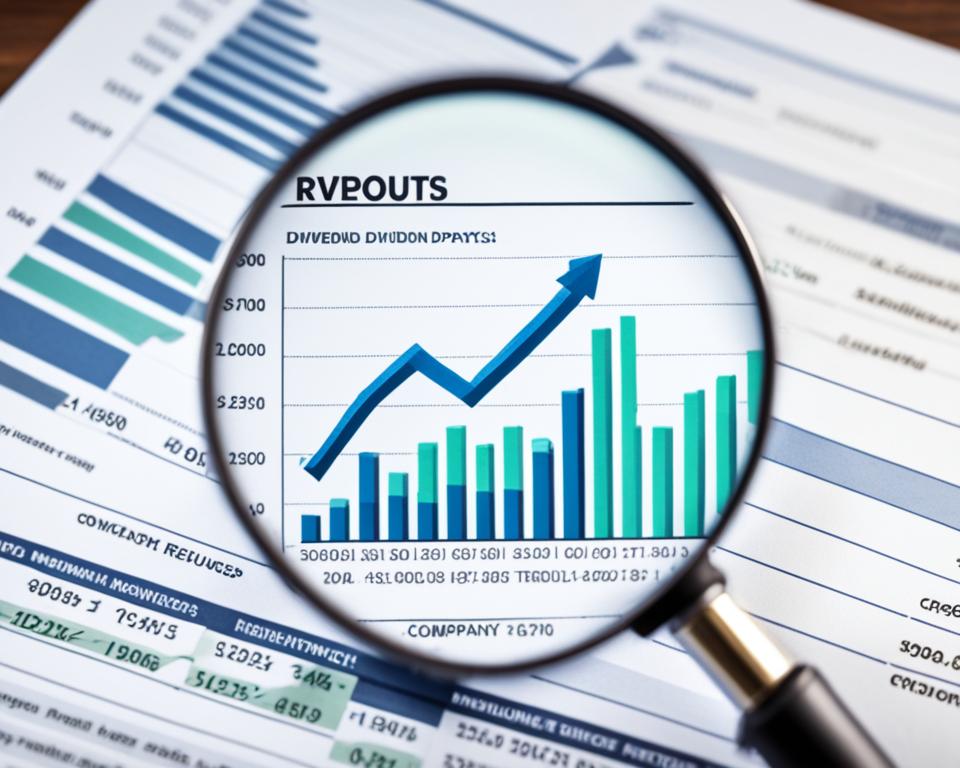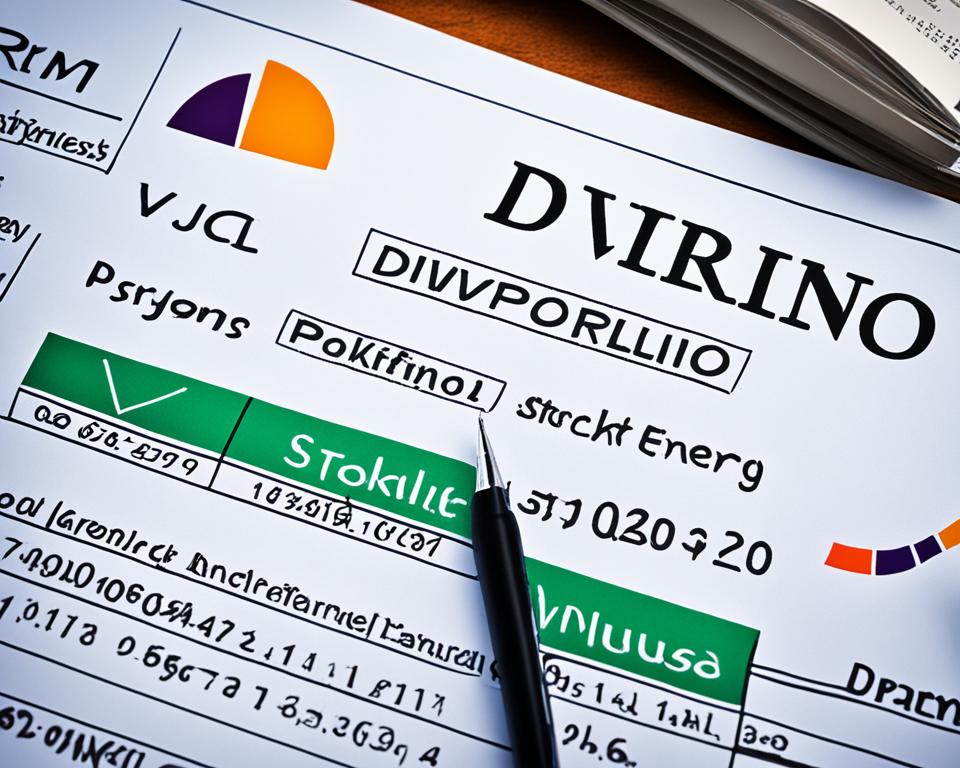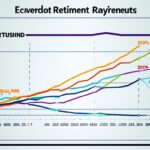When it comes to building a dividend portfolio that stands the test of time, investors often find themselves at a crossroads, navigating between tempting high-yield offerings and the fundamental strength of well-established companies. Success in evaluating dividend stocks hinges on a careful analysis of financial health, strategic foresight, and consistent performance metrics. By thoroughly examining key data points such as dividend ratios and company history, investors can identify the best dividend stocks to buy. It’s not just about picking stocks with the highest yields; it’s about finding those gems that provide reliable and sustainable returns, solidifying one’s income stream for the long haul.
The quest for securing top-notch dividend stocks encompasses more than spotting attractive yields. It involves delving deep into each company’s financial backbone, assessing the bedrock of its capacity to generate steady and increasing cash flows to its shareholders. Whether one is a seasoned investor or a novice one, mastering dividend stock analysis and learning how to pick dividend stocks effectively can pave the way to a profitable and resilient investment journey. With the right tools and knowledge, the dividends selected today can become the cornerstone of financial prosperity for many tomorrows.
Key Takeaways
- Identify dividend-paying companies with solid financial health to ensure sustainable returns.
- Use key ratios like dividend payout and coverage to evaluate a company’s ability to grow dividends.
- Investigate past dividend trends for consistency and signs of financial stability.
- Consider the industry and sector of the stock for alignment with investment goals and risk tolerance.
- Examine management’s capital allocation strategy to understand long-term dividend distribution viability.
- Look beyond high yields to find dividend stocks with strong fundamentals and growth potential.
Understanding Dividend Stock Ratios
For investors focused on dividend stock performance metrics, understanding dividend stock ratios is a cornerstone in evaluating dividend stocks. These ratios not only hint at the present fiscal health of a company but also offer a glimpse into its capacity to uphold and grow dividends. Let’s dive into the critical ratios that guide investors in dividend stock screening to secure sustainable income-producing investments.
The Role of Dividend Payout Ratios
Dividend payout ratios represent the percentage of earnings a company distributes to its shareholders in the form of dividends. It’s a pivotal figure, indicating how comfortably a company can maintain its dividends amid market fluctuations and unexpected financial demands. A prudent investor examines this ratio to discern if a company is reinvesting a healthy portion of profits to fuel future growth while providing stable dividends.
Assessing Dividend Coverage Ratios
The dividend coverage ratio shines a light on the number of times a company could cover its dividend with net income. A higher ratio hints at greater security, suggesting the company is generating ample profits not just to sustain dividend payments but also to withstand economic downturns. This ratio assists investors in sketching a financial resilience map of potential dividend-paying contenders.
Significance of Free Cash Flow to Equity (FCFE)
Free Cash Flow to Equity (FCFE) anchors a robust dividend analysis framework. It speaks volumes about the actual cash available to be returned to shareholders after all expenses, debts, and growth investments. A positive FCFE implies a company has the financial flexibility to increase dividends, buy back shares, or reinvest in operations, all without impairing its liquidity position.
Evaluating Net Debt to EBITDA Ratios
Lastly, the Net Debt to EBITDA ratio is an essential barometer of financial leverage and a company’s debt service capabilities. It gauges the proportion of earnings before interest, taxes, depreciation, and amortization (EBITDA) that would be needed to clear its net debt. A lower ratio typically illustrates a solid foundation from which a company can weather financial stressors and sustain dividend payments.
| Ratio | Description | Indicator of |
|---|---|---|
| Dividend Payout Ratio | Portion of earnings distributed as dividends. | Dividend sustainability and growth potential. |
| Dividend Coverage Ratio | Times net income covers the dividend. | Ability to maintain dividends in adverse conditions. |
| FCFE | Cash available for shareholder distributions after expenses and debts. | Financial flexibility and liquidity. |
| Net Debt to EBITDA | Company’s leverage and debt service capabilities. | Risks associated with debt load and financial health. |
Each ratio, by shedding light on different aspects of a company’s financial status, works in concert to paint a comprehensive picture for investors. By mastering the interpretation of these ratios, one becomes adept at selecting dividend stocks that are more likely to deliver consistent returns, mitigating the risks associated with investing in companies that may appear lucrative but falter in fiscal fortitude.
Evaluating Dividend Stocks: A Guide to Financial Health Indicators
For those looking to fortify their investment portfolio, understanding how to evaluate dividend stocks is crucial. Financial health indicators such as debt-to-equity ratios, current ratios, and free cash flow paint a vivid picture of a company’s fiscal robustness and dividend sustainability. These markers hold the key to evaluating dividend yield and selecting stocks with favorable long-term prospects. Here, we unlock the vital signs of dividend stock health investors must scrutinize.
Debt-to-equity ratio, a measure of a company’s financial leverage, reveals the extent to which a company is financing its operations through debt versus wholly owned funds. A lower debt-to-equity ratio generally suggests a less risky position, indicative of a potentially safer bet for dividend-seeking investors. Conversely, a high ratio may signal a warning when it comes to the predictability and sustainability of dividend payouts.
Current ratio is another essential financial metric wherein a higher ratio indicates a company’s greater ability to meet its short-term liabilities with its short-term assets. This liquidity metric, when combined with a solid understanding of free cash flow — the amount of cash generated by a company after accounting for capital expenditures — can give investors a clear indication of a firm’s competence in maintaining or possibly increasing its dividends.
Mastering dividend stock valuation techniques is of utmost importance. It involves not only assessing these financial indicators but interpreting them within the context of the company’s industry and historical performance. A nuanced approach to picking dividend stocks balances these ratios with an understanding of the broader economic environment and competitive positioning.
Investors versed in how to pick dividend stocks know that digging into these metrics can shed light on a company’s true dividend-paying potential, identifying those gems that offer both stability and growth.
To offer more granular insights, let’s consider a practical application of these principles in a comparative analysis:
| Financial Indicator | Why It Matters | Good Threshold | Potential Red Flags |
|---|---|---|---|
| Debt-to-Equity Ratio | Assesses leverage and risk level. | Below industry average. | Substantially higher than industry peers. |
| Current Ratio | Measures short-term liquidity. | Above 1.5x | Below 1x |
| Free Cash Flow to Equity (FCFE) | Indicates available cash for dividend distribution. | Positive numbers. | Consistent negative values. |
Adept investors evaluating dividend stocks take into account more than just present figures; they also consider how these indicators have changed over time. Trends can be revealing, offering insights into whether a company’s financial health is on the upswing or facing a downtrend. In summation, evaluating financial health indicators provides a snapshot of the company’s ability to deliver sustaining dividends now and into the future.
Interpreting the Dividend Yield and Payout Ratio
At the core of evaluating dividend stocks lies the art of understanding two fundamental concepts: dividend yield and payout ratio. Together, these provide an investor with a snapshot of the potential income a stock might offer and insight into a company’s dividend sustainability and financial health. In the process of identifying top dividend stocks for growth, these performance metrics are invaluable tools in an investor’s arsenal.
Dividend Yield as an Investment Lure
Dividend yield is often the initial draw for investors seeking income through their stock portfolios. It presents itself as a straightforward calculation – the annual dividends per share divided by the stock price. The result is usually expressed as a percentage, reflecting the return on investment that the dividends represent at the stock’s current price. Despite its allure, yield alone doesn’t paint a complete picture. Those evaluating dividend stocks need to probe further to discern the true value behind the figures.
Implications of High vs. Low Payout Ratios
A corporate payout ratio reflects the portion of earnings paid out as dividends to shareholders. When pondering dividend stock performance metrics, a low payout ratio may signal that a company has ample profits to reinvest into its operations, suggesting potential for growth and increased value over time. On the flip side, a high payout ratio can be a double-edged sword – it may indicate generous shareholder payouts relative to earnings, but it could also point to limited scope for growth or even future dividend cuts if earnings fall or cannot be maintained.
Consequently, the payout ratio is not a metric to be taken at face value but one that requires interpretation in the context of a company’s broader financial landscape and prospects. A healthy balance between paying dividends and reinvesting for future growth and stability is key, and companies striking this equilibrium tend to be sought after in the pursuit of top dividend stocks for growth.

The analysis of dividend yields and payout ratios is a display of the investor’s discernment in approaching dividend stock selection. It’s the blend of these metrics that sheds light on the sustainability of dividends and the forward path of the stock in question. As investors traverse the complex landscape of the stock market, these ratios guide them to make informed and calculated decisions in constructing a growth-focused portfolio.
Delving into Dividend History and Growth Prospects
As the landscape for dividend stock screening becomes increasingly complex, investors are wise to chart the course of a company’s past dividend distributions to forecast future performance. A company’s dividend history often reads like an open ledger on its financial fidelity, weighing heavily on decisions relating to evaluating dividend yield and uncovering the best dividend stocks to buy. Robust dividend histories tend to mirror a company’s capacity for not only affirming investor trust but also signaling ambitious growth tenets.
Consistency in Dividend Increases
When dividends ascend consistently, it intimates robust earnings growth and a resilient business model—qualities investors hold in high esteem. Steady climbs in dividend payouts can often translate into a company’s agility in navigating economic cycles, reinforcing its allure as an investment vehicle with enduring appeal. This upward trajectory offers assurance of calculated risk and marked foresight, pivotal in an investor’s pursuit to amplify their portfolio with steady gains.
The Warning Signs from a Fluctuating Dividend History
A volatile dividend history, marked by sporadic increases and decreases, raises a flag of caution for potentially tumultuous financial underpinnings. These churning tides of dividend payouts could portend underlying instabilities or a management team grappling with balancing shareholder returns against operational demands. Such fluctuations necessitate a magnified review, as they may herald significant shifts in a company’s long-standing strategies or adaptability within its sector.
The continuum of dividend histories is a narrative of fiscal accomplishments and challenges—an investor’s beacon when charting the murky waters of stock selection. Consider the juxtaposition of past and prospective dividend behaviors like steering through investment decisions, where the hallmark of growth potential collaborates with historical precedents to guide one towards sunlit financial uplands.
- Vet the dividend growth rate against industry benchmarks to anticipate forward momentum.
- Scrutinize instances of dividend cuts to unearth possible systemic or episodic troubles.
- See past dividend reinstatements as cues of resilience and a commitment to shareholder value.
The Influence of Sector and Industry on Dividend Reliability
When evaluating dividend stocks, astute investors recognize the profound impact that sector and industry have on the dependability of dividend payouts. Utilities and consumer staples, known for their integral services, typically offer more stable dividends due to the consistent demand for their products regardless of economic conditions. As such, these sectors are often included in dividend stock investment strategies that prioritize income stability and lower risk.
On the other hand, technology companies, although they might provide lower dividend yields, are frequently identified as top dividend stocks for growth. The rapid innovation cycle and the potential for market disruption offer a different kind of value proposition, where the emphasis is on the appreciation of stock value alongside the potential for dividend growth.
Investing in dividend stocks effectively requires an awareness of sector-specific trends and market cycles. For instance, the energy sector may offer substantial dividends during times of high commodity prices, but these can also be volatile when the market swings. Conversely, healthcare, with its non-cyclical nature, may offer more predictable returns, making it a compelling choice for those seeking reliable dividends.
Moreover, the industry within a sector can significantly shape the dividend profile of stocks. For example, within the financial sector, insurance companies might present a different risk and dividend payout pattern compared to banks or investment firms, influenced by regulatory environments and business models. Recognizing these nuances is essential when crafting a portfolio with the ambition of both capital preservation and growth.
Investors understand that each industry carries a unique set of risks and opportunities that can significantly influence the sustainability and growth potential of dividends.
To illustrate the diversity within sectors and how it impacts dividend reliability, here is a comparative analysis:
| Industry | Dividend Yield Behavior | Growth Prospects | Market Stability |
|---|---|---|---|
| Utilities | Higher, more stable yields | Lower growth, steady demand | Highly regulated, less market sensitivity |
| Technology | Generally lower yields | Higher growth, innovation-driven | Subject to market cycles and competitive pressure |
| Consumer Staples | Stable yields | Moderate growth, essential consumer goods | Resistant to economic downturns |
| Healthcare | A mix of stable and variable yields | Steady growth, demographic tailwinds | Relatively insulated from economic changes |
| Energy | Variable yields based on commodity prices | Subject to geopolitical and environmental factors | High volatility with fluctuating commodity markets |
In conclusion, investors seeking to establish a well-balanced and growth-oriented dividend portfolio must carefully assess the intrinsic characteristics of sectors and industries. By aligning their dividend stock investment strategies with an in-depth understanding of these factors, they can enhance their prospects for achieving both steady income and capital appreciation.
How Management’s Capital Allocation Impacts Dividends
In the intricate art of dividend stock analysis, the strategies employed by corporate management in capital allocation cannot be overstated. How a company decides to distribute its financial resources has profound implications for its ability to sustain and grow its dividend payments. Experienced investors, knowledgeable in dividend stock valuation techniques, closely evaluate a company’s reinvestment policies against its dividend history to gauge the potential for future payouts. Such an examination is illustrative in teaching one how to pick dividend stocks that are not just temporarily lucrative, but poised for long-term success.
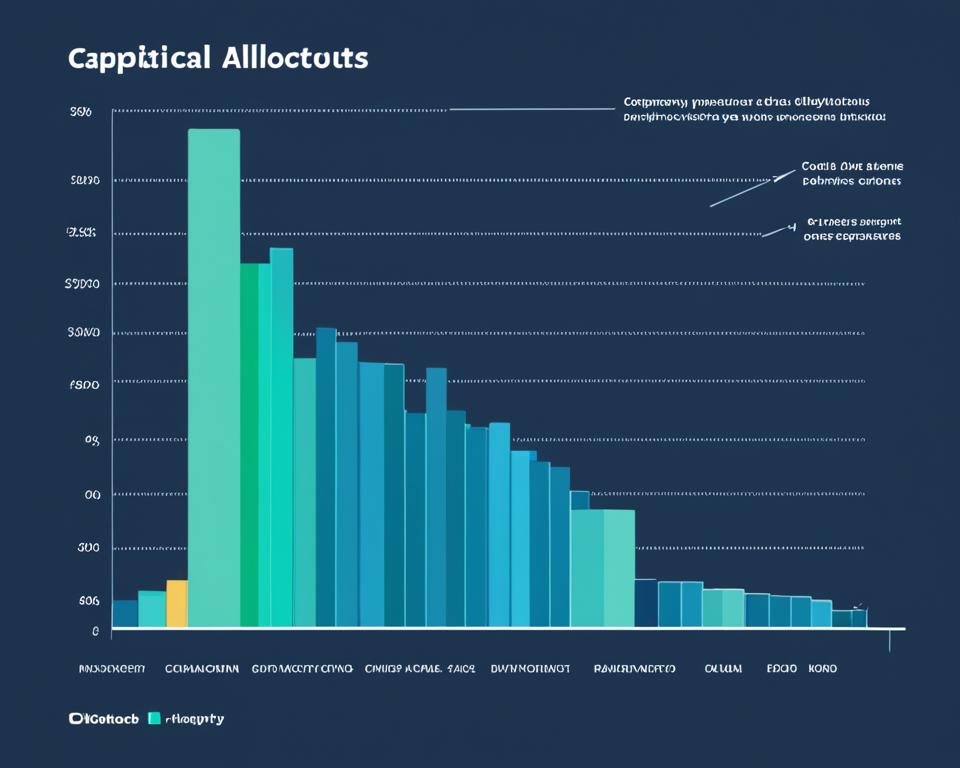
Balancing Dividends with Business Reinvestment
Crafting a dividend policy that complements a company’s growth trajectory is a delicate balancing act. On one side are the shareholders, who typically favor direct returns in the form of high dividends. On the other is the need to reinvest earnings back into the company to fuel future growth. Management’s acumen in navigating this balance significantly dictates the sustainability of dividend payments. A sagacious capital allocation strategy ensures that dividends are not only paid out consistently but also that they do not encumber the company’s growth potential or its ability to innovate and expand.
The Long-term Vision of Dividend Distribution Strategies
An astute investor looks beyond the present to a company’s long-term vision regarding dividends. A dividend distribution strategy becomes compelling when it aligns with broader financial plans—when dividends are not merely declared but are supported by a framework designed for enduring prosperity. It is this foresight in a company’s strategic planning that often emboldens confidence in investors, assuring them of the firm’s commitment to both shareholder wealth and business longevity. The most promising dividend stocks often stem from companies where management has demonstrated an ability to foresee and prepare for future financial exigencies and opportunities.
Top Dividend Stocks for Growth: Identifying Market Leaders
For growth-oriented investors, pinpointing the best dividend stocks to buy involves sifting through the market to uncover companies not just with impressive yields but also with exceptional financial health and strong industry stature. These market leaders are often characterized by a history of increasing their dividend payouts and displaying a prudent balance between rewarding shareholders and reinvesting to fuel further expansion.
In evaluating dividend yield, numbers alone don’t suffice—attention must be paid to the stability and long-term viability of the company’s dividends. Companies with resilient financials have the wherewithal to increase payouts consistently, even against the backdrop of volatile markets. Essentially, these can be the cornerstones for a dividend stock investment strategy aimed at achieving sustained growth.
Identifying these dividend-paying stalwarts involves rigorous analysis, but there are some hallmarks of superior growth stocks that tend to stand out:
- Steady dividend increment that beats inflation and continues to reward investors over time.
- Financial metrics indicating strong free cash flow and low leverage, suggesting room for both dividend growth and operational investments.
- A clear strategic vision from management that aligns with the company’s financial decisions and its capital distribution policies.
“A great dividend stock combines robust yield with the promise of dividend growth, which reflects positively on a company’s health and investor confidence.”
A systematic approach is key when delving into historical performance to ensure the selected stocks have shown resilience in various market conditions. Continual adaptation and responsiveness to industry changes underscore the importance of agility in a company’s operation, allowing for enhanced confidence in its future trajectories.
Lest we forget, while seeking these prime dividend stocks for robust portfolios, investors should ideally strive to connect the dots between strong financial numbers, strategic industry positions, and shareholder value. Such multi-faceted scrutiny invariably leads to identifying companies that possess the calibre for enduring success and can justifiably be termed as some of the best dividend stocks to buy.
Dividend Stock Screening: Beyond the Basic Metrics
For discerning investors, dividend stock screening is about peering into the depth of financial details to spot enduring value. It’s more than a cursory glance at dividend yield or company size; it requires a plunge into a sea of data, trend analysis, and comparative performance to home in on stocks with genuine, sustainable dividend potential. Let’s navigate through the rich array of advanced screening techniques that tamp down the noise and highlight promising candidates in the vibrant ecosystem of dividend-generating stocks.
Advanced Screening Techniques for Informed Selection
To the vigilant investor, adept in dividend stock analysis, recognizing the right stock comes with understanding advanced performance metrics. Evaluating initiatives such as dividend growth rates places a spotlight on companies scaling dividends in lockstep with profits, signaling financial health and shareholder prioritization. Similarly, a scrutiny of dividend sustainability, punctuated with a historical lens over payout performance, grants a clearer sightline to long-term stability and resilience.
Using Dividend Stock Performance Metrics
In the intricate dance of dividend stock screening, performance metrics serve as the choreography guiding investors through the complex rhythm of market dynamics. As one moves with these indicators—historical yield trends considered against industry averages, payout ratios juxtaposed with profitability forecasts—the path to informed stock selection becomes discernible. The synthesis of this data, interlaced with qualitative analysis, becomes the essence of evaluating dividend stocks with a focus not just on today’s profitability, but also tomorrow’s promise.
| Performance Metric | Function in Screening | Equals Indicator of |
|---|---|---|
| Dividend Growth Rate | Assesses the annual increase in dividends per share | Company’s commitment to shareholder value |
| Historical Yield Trends | Analyzes past dividend yields to predict future behavior | Dividend reliability and stock desirability |
| Payout Ratios | Measures the share of earnings allocated to dividends | Financial soundness and growth potential |
| Comparative Industry Averages | Evaluates stock metrics against industry norms | Stock’s competitive advantage within its sector |
Precise dividend stock screening goes beyond cursory numeric correlations; it requires calibration according to sector-specific standards, company’s lifecycle stages, and the larger economic backdrop. These advanced screening metrics empower investors with a sharper toolkit for excavation, unearthing those dividend-paying stocks that align with a vision of both wealth accumulation and preservation.
Dividend Stock Valuation Techniques: The Investors’ Toolbox
When the goal is to build a resilient income-generating portfolio, investors often turn to dividend stock valuation techniques for a deeper insight into potential investments. Mastering the tools for evaluating dividend stocks is crucial to uncovering the true value behind a stock’s yield, and these tools should measure more than just present figures. They should provide a gauge for long-term sustainability and growth prospects, taking into account historical performance, industry stability, and the company’s fiscal policies. Here we explore a selection of key techniques that form part of every informed investor’s arsenal.
Assessing Historical Dividend Yields: Looking back at a company’s dividend yield over time can offer invaluable clues about its consistency and potential for future payouts. A historical analysis helps to identify patterns that might influence an investor’s decision, such as whether a stock’s high yield is a recent spike or part of a sustained trend.
Examining Payout Ratios: The dividend payout ratio is a leading indicator within dividend stock performance metrics. It compares the total amount of dividends paid to shareholders to the company’s net income. An optimum payout ratio should strike a balance between returning earnings to investors and retaining funds for future growth.
Payment Sustainability Check: Scanning for red flags in payout sustainability is essential. A payout that seems high relative to company earnings or free cash flow might indicate a dividend cut in the offing, which could negatively affect the investment’s prospective returns.
Understanding Sector and Industry Trends: A company does not operate in isolation; it’s affected by the trends and health of the sector it resides in. By comprehending these dynamics, investors can make more educated predictions about a dividend’s future viability.
Growth Potential Evaluation: Companies that have a history of increasing their dividend payments often have a proven business model and a commitment to shareholder value. Looking for such growth indicators is a fundamental aspect of long-term dividend investing.
Wise investors choose to employ a diverse set of valuation techniques in evaluating dividend stocks, ensuring a comprehensive assessment that mitigates risk while pinpointing sustainable income sources.
| Technique | Function | Investor Benefit |
|---|---|---|
| Historical Dividend Analysis | Identifies dividend consistency and longevity | Discerns stability and potential for future yields |
| Payout Ratio Review | Assesses proportion of income paid as dividends | Indicates balance between distribution and growth |
| Sustainability Check | Evaluates the potential for dividend maintenance | Forewarns of possible cuts, safeguarding the investment |
| Sector Trend Analysis | Determines the influence of market sectors | Provides context for the company performance |
| Dividend Growth Evaluation | Tracks increasing dividend patterns over time | Highlights companies with sound financial progress |
The insights gleaned from employing a robust toolkit for dividend stock valuation techniques can reveal a truer picture of a dividend stock’s viability and future performance. Ultimately, these strategies enable the investor to make decisions grounded in financial analysis as opposed to speculation – a vital distinction for conservative and growth-oriented dividend investors alike.
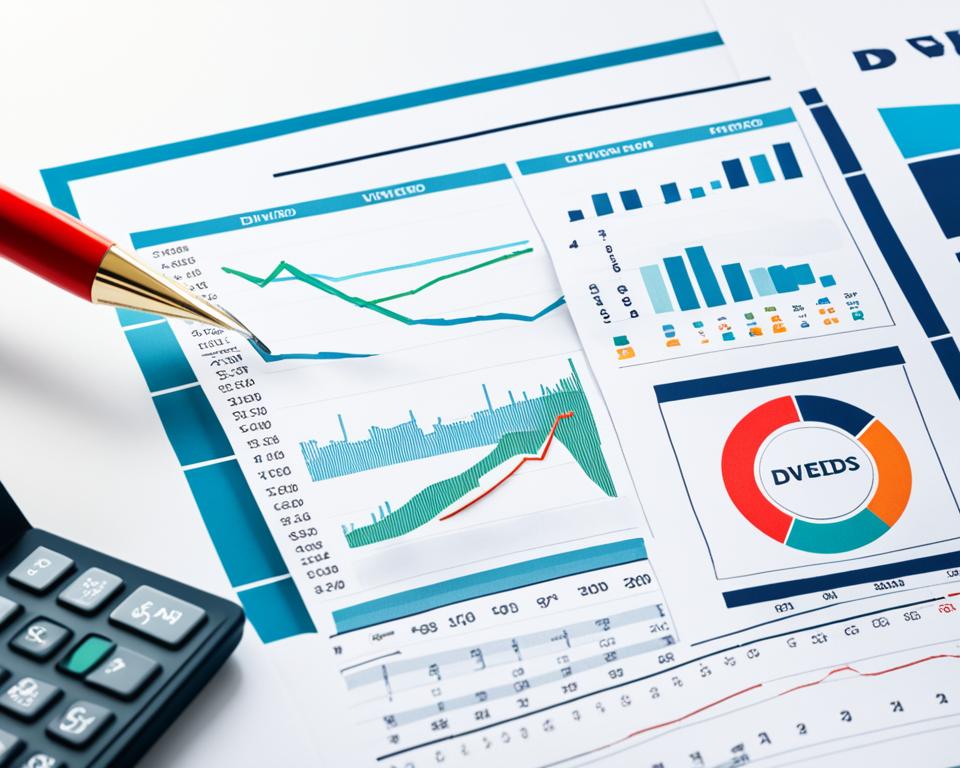
Why Dividends Matter: The Compelling Reasons for Investors
Dividends are more than just a portion of profit; they are a testament to a company’s health and an investor’s shrewd strategy. Grounded in historical performance and offering a variety of benefits, dividends form a critical component of evaluating dividend stocks. They’re not merely an income stream; they represent a company’s confidence in its future profitability and investors’ trust in its enduring value.
Growth and Expansion of Profits
When we talk about evaluating dividend yield, we’re looking at a powerful factor that has consistently driven stock investing profits. Evidence of this is seen in the S&P 500 returns between 1980 to 2019, where dividends were a dominant force, making up 75% of the total returns. This period of immense growth and profit expansion is a ringing endorsement of the role dividends have played in investor wealth accumulation.
Moreover, dividends often contribute to the appreciation of a stock’s price. This dynamic occurs as a result of investor attraction to dividend-paying stocks, thereby creating a demand which can push the stock price upward. Understanding this mechanism is vital when considering dividend stock investment strategies, as it feeds into the overall return that an investor can expect from dividend-bearing securities.
Tax Advantages Offered by Dividend Stocks
Dividends don’t just add to your profit columns; they also come with tax efficiencies that cannot be ignored. The IRS offers favorable tax rates for qualified dividends, which range from 0% to 20%, depending on your taxable income bracket. Such tax advantages make dividend stocks particularly attractive in evaluating dividend yield and plotting dividend income strategies.
Additionally, the power of dividends extends to fighting inflation—a critical factor when preserving wealth. By consistently outpacing inflation, dividends ensure that an investor’s purchasing power isn’t eroded over time. Hence, including dividend stocks in one’s portfolio isn’t just about present-day gains; it’s about securing financial stability and purchasing power in the future.
In essence, when evaluating dividend stocks, the multifaceted benefits ranging from profit growth to tax advantages reinforce why dividends should be a central consideration in investment strategies. Ultimately, dividends can act as a lighthouse guiding investors through the tempestuous seas of the stock market, toward the calmer waters of sustained financial growth and security.
How to Pick Dividend Stocks with Sustained Payout Potential
When evaluating dividend stocks, savvy investors scrutinize various factors to identify those with the capability for continued and reliable payouts. A rigorous approach to dividend stock screening involves a deep dive into historical dividend data and firm financial underpinnings to ascertain whether a company is genuinely committed to rewarding its shareholders.
Delving into a company’s history of dividend payments provides a clear indication of the regularity and progression of previous dividend increases—vital signs of a potential long-term investment. The strength and consistency of cash flows, coupled with a company’s adeptness in managing leverage, signal its ability to sustain dividends. Furthermore, resilience in the face of economic headwinds is another important criterion, indicating a company’s robustness.
Regularly ascending dividend payouts often highlight a business’s confidence in its fiscal health and a conviction to uphold shareholder interest. These increments are not arbitrary; they resonate with a company’s fiduciary responsibility and future outlook. For those wanting to understand how to pick dividend stocks, it becomes imperative to align choices with these growth and sustainability indicators.
Regular and incremental dividends are the clearest affirmation from a company of its robust financial health and its strategy for long-term prosperity.
As part of a comprehensive dividend stock screening process, investors often consult the following table that contrasts vital metrics indicative of preferred dividend-payout capabilities:
| Dividend Metric | Indicator of Strength | Desirable Range/Value |
|---|---|---|
| Dividend Growth Rate | Commitment to increasing shareholder value. | Consistently above inflation rate. |
| Dividend Payout Ratio | Fiscal room for maneuver and growth. | Steady or declining, typically below 60%. |
| Cash Flow Consistency | Financial health and dividend sustainability. | Strong, positive cash flows from operations. |
| Debt-to-Equity Ratio | Leverage and financial risk. | Lower than industry average, trending downwards. |
| Resilience to Economic Downturns | Capacity to maintain dividends in tough times. | History of steady or increasing dividends despite recessions. |
Ultimately, evaluating dividend stocks to discern those with sustainable payout potential is a multilayered process that demands thorough research and keen insight. By combining the art of analyzing past dividend trends with the science of financial scrutiny, investors are able to make informed decisions that align with their income goals and risk profiles.
Evaluating Dividend Yield: Quality Over Quantity
When eyeing the prospects of evaluating dividend stocks, investors often find themselves drawn to the allure of high dividend yields. However, the seasoned investor knows that the true art lies in discerning the quality of these yields and their capability to be sustained over time. A meticulous approach to evaluating not just the quantity but the quality of a dividend yield is critical in unearthing the best dividend stocks to buy.
Analyzing the Sustainability of High Yields
High dividend yields can be tantalizing for investors seeking immediate income. Still, a comprehensive evaluation of the surrounding circumstances of these yields is necessary. Before adding a high-yield stock to one’s portfolio, it’s essential to assess if this yield is the result of a company’s robust earnings or merely the consequence of a declining stock price. In evaluating dividend yield, a lower stock price can inflate the dividend yield percentage, presenting an illusion of profitability where there may be none.
An evaluation must go beyond the surface to check the company’s debt levels, payout ratios, and free cash flows. By doing so, investors ensure they are looking at companies that can support these high yields consistently, rather than those at risk of slashing dividends in the face of economic strain. The focus remains firmly on the quality of the yield, rather than its size alone.
Dividend Growth as a Predictor of Long-Term Performance
While high dividend yields might catch an investor’s attention, it is the growth of these dividends that truly speaks to a company’s longevity and commitment to its shareholders. Regularly increasing dividends suggest a company’s confidence in its financial health and its dedication to sharing the success with its shareholders. Through consistent dividend growth, companies exhibit a robust financial constitution that can withstand the test of time, and hence become viable candidates for the title of best dividend stocks to buy.
By examining dividend growth rates, investors can gauge a company’s future financial performance and the likelihood of continued investment returns. Whether the dividends are sustainably funded through earnings and cash flow indicates a more reliable dividend and its potential for appreciation. It is such sustained growth, backed by business fundamentals, that corroborates the pursuit of quality over quantity in evaluating dividend yield.
Investors should prize dividend stocks that exemplify a harmonious blend of appealing yield and tenable growth, ensuring both immediate income and progressive gain.
In pursuit of a growth-oriented portfolio, therefore, investors lean towards stocks that not only offer attractive yields but also hold the promise of escalating payouts. This dual focus on yield quality and dividend growth forms the essence of sophisticated dividend investing, guiding towards well-informed and potentially lucrative investment decisions.
Dividend Stock Investment Strategies: Building a Resilient Portfolio
Developing dividend stock investment strategies is akin to constructing a fortified castle that can withstand market tempests while providing a sanctuary of steady income. To erect such a bastion, investors must not only pursue high yields but also anchor their choices in solid financial performance and reliable dividend histories. The objective is to craft a portfolio that harmonizes income generation with an aspirational vision for capital appreciation.
Commencing the quest for how to pick dividend stocks requires a multi-pronged approach: sprinkling investments across various sectors and industries to mitigate risks, pinpointing companies with admirable records of dividend consistency, and considering the synergy between current yields and the potential for future growth. A vital part of a successful strategy is systematically evaluating dividend stocks to sieve out the fleeting from the steadfast.
One such method is to compare a company’s financial statements and dividend metrics against its industry peers. This comparison can yield insights into the firm’s relative performance and gauge its prowess within its own battlefield. This provides a framework for predicting its ability to maintain or grow dividends, relative to the competitive pressures it faces.
| Financial Indicator | Observations | Strategic Implication |
|---|---|---|
| Dividend Yield | Offers immediate income potential. | Should be assessed for sustainability and growth prospects. |
| Dividend Growth Rate | Reflects a company’s progressive increase in payouts. | Signals a dedication to shareholder value and financial strength. |
| Payout Ratio | Indicates the proportion of earnings returned as dividends. | Helps investors understand reinvestment potential and payout sustainability. |
| Historical Dividend Patterns | Showcases the consistency and reliability of past dividends. | Acts as a predictor of future commitment to dividends. |
| Sector Performance | Contextualizes stock performance within the industry space. | Enables selection based on sector growth and stability considerations. |
Armor-strong portfolios are buttressed by the intricate scrutiny of financial ratios, the insightful examination of yield and growth potential, and an alert eye on industry trends. This triumvirate not only sustains an investment strategy through the vicissitudes of market volatility but also points the way toward domains ripe for growth.
Whether it is a blue-chip behemoth or a nimble niche player, a viable candidate in a dividend-focused portfolio often possesses the ability to navigate through economic downturns unperturbed. Thus, investors endeavor to comprehend a company’s past reactions to economic headwinds, as these responses can serve as a reliable barometer of future performance.
Finally, seasoned investors align their dividend stock investment strategies with their personal financial horizons. They tailor their portfolios to accentuate either immediate income needs or long-term capital gains, based on the timeframes of their investment goals. In doing so, they endeavor to marry a prudent level of risk with the comforting assurance of dividend appreciation potential.
Investing in dividend stocks is less about chasing the ephemeral allure of high yields and more about the meticulous curation of a portfolio designed for resilience and growth.
Conclusion
The journey through the intricate world of dividend stock analysis culminates in a comprehensive approach to evaluating dividend stocks and their yields. It’s clear that investors must go beyond superficial attraction to high dividend yields and immerse themselves in a mosaic of financial ratios, historical insight, and strategic corporate decisions. Evaluating dividend yield through this multifaceted lens enables investors to dissect potential income streams and assess their vitality within the broader tapestry of market trends and economic indicators.
Intelligent investing demands this mix of art and science, where one must marry the quantitative certainty of payout ratios with the qualitative assessments of company history and industry dynamics. A thorough evaluation weeds out the transient and troubled, spotlighting those dividend-paying companies poised for longevity and prosperity. The investor, armed with knowledge and tools of analysis, can decode complex financial information, shaping a portfolio that not only seeks profit but also strategically hedges against volatility and risk.
In essence, this evaluative process epitomizes wise investment practice. It champions the prudent selection of stocks that not only promise returns but steward capital with the promise of growth and wealth preservation. Thus, in the realms of evaluating dividend stocks, the conscientious investor can indeed find robust paths to financial fortitude.
FAQ
What factors should investors consider when evaluating dividend-paying companies?
When evaluating dividend stocks, investors should examine a range of financial health indicators, including earnings, cash flow, debt levels, and capital requirements. These factors are crucial in assessing a company’s ability to sustain and potentially increase its future dividend payouts. Understanding industry-specific dynamics and the company’s dividend history and management’s approach to capital management can also provide significant insights into the best dividend stocks to buy and how to pick dividend stocks with growth potential.
How do dividend payout ratios influence investment decisions?
Dividend payout ratios offer a quick snapshot of how much earnings a company is distributing to shareholders as dividends. A lower ratio may suggest room for dividend growth and financial stability, whereas a higher ratio could point to possible payout sustainability issues. Evaluating these ratios helps in determining the company’s commitment to returning value to shareholders and in dividend stock screening.
Why is the dividend coverage ratio important?
The dividend coverage ratio is a measure of how many times a company can pay out its dividend within a period, using its net income. This metric is key when analyzing dividend stock performance metrics because a higher ratio indicates greater financial flexibility and a lower risk of dividend cuts, making it appealing for long-term investors.
What does Free Cash Flow to Equity (FCFE) tell us about dividend stocks?
Free Cash Flow to Equity (FCFE) reveals the amount of cash that a company can potentially distribute to shareholders after accounting for all expenses, debts, and investments. When evaluating dividend stocks, a high FCFE implies that a company can maintain or grow its dividends, which is a positive sign for investors focusing on income.
How does Net Debt to EBITDA relate to dividend evaluations?
The Net Debt to EBITDA ratio is an indicator of a company’s financial leverage and its ability to service its debt. In the context of dividend stock evaluations, a lower ratio indicates better financial health which supports the sustainability of dividend payments.
Why is assessing a company’s dividend yield and payout ratio important?
The dividend yield offers insight into the potential returns in relation to the current stock price, while the payout ratio shows how sustainable the dividend may be based on a company’s earnings. Evaluating these metrics helps investors choose top dividend stocks for growth and ensure a balance between income and long-term investment value.
How can investors gauge growth prospects from a company’s dividend history?
A consistent record of dividend increases typically signals strong financial health and growth prospects. Conversely, a history of irregular or decreasing dividends may suggest underlying issues. Thus, scrutinizing a company’s dividend track record is an integral part of dividend stock screening.
What is the significance of sector and industry in selecting dividend stocks?
Different sectors and industries offer varying levels of dividend reliability due to their distinct market dynamics and economic cycles. For example, utilities tend to provide stable dividends, whereas the tech sector may offer lower yields but higher growth potential. Hence, investors should align their choices with sector-specific characteristics to enhance their dividend stock investment strategies.
How does management’s capital allocation strategy affect dividend stocks?
Management’s strategy in allocating capital between paying dividends, reinvesting in the business, and repaying debt can significantly determine dividend sustainability and growth. An approach that balances these factors effectively suggests that dividends are well-supported and can influence how to pick dividend stocks.
What are advanced screening techniques in dividend stock analysis?
Advanced screening techniques involve looking beyond basic financials to evaluate dividend growth rates, sustainability, and the company’s comprehensive financial health. This allows investors to use tailored dividend stock performance metrics for making more informed selection decisions.
How do tax advantages influence dividend stock selection?
Dividend stocks may offer tax advantages through qualified dividends, which are taxed at a lower rate than regular income. This tax efficiency makes dividend investing an attractive option for income-focused investors, and it should be considered when evaluating dividend yield and overall investment strategies.
How can investors analyze the sustainability of high dividend yields?
High dividend yields need to be reviewed in the context of the company’s earnings strength and stock price stability. Sustainable high yields that are supported by a company’s solid business fundamentals and have a track record of growth are likely more reliable and preferable.
What characterizes a robust dividend stock investment strategy?
A robust investment strategy for dividend stocks includes diversification across sectors and industries, a focus on companies with dependable dividend histories, and an eye on both current income and potential for capital appreciation. It requires thorough analysis of financials, sector trends, yield and payout ratios, and dividend growth projections.

